At its height, Downtown Peoria was a commercial powerhouse
PEORIA — The place to be. The center of all activity. The finest shopping in the area.
That's how reporters, authors and advertisers once described Downtown Peoria.
In the 1950s and '60s, the Central Business District was a commercial powerhouse, home to hundreds of businesses large and small, from massive, multistory department stores to tiny, second-floor offices. Hotels and tourist homes housed countless visitors. Restaurants and theaters thrived. Parades and carnivals drew lively crowds.
'That downtown was something'

In November 1975, Jerry Klein, a Journal Star columnist and author, recalled Downtown Peoria's postwar and midcentury heyday.
"This was the place to be, the only place," he wrote in a front-page article. "There were crowds downtown until late at night. There were drug stores and candy shops and places where the high school kids bought malteds and ice cream. There were little taverns in the alleys and winking signs at night."
Klein waxed nostalgic about the "mighty" Block and Kuhl store and its Toyland, which was "probably the closest a kid could come in those days to realizing what heaven might be like." He recalled the store's "richly furnished" Skyline Restaurant and its "spectacular view over the river."
Klein lamented the loss of the downtown Kmart, Hamilton Store and Walgreens over the course of the 1960s and into the '70s — closures that coincided in part with the opening of Northwoods Mall in 1973. He mourned the former movie theaters, the pool halls and the restaurants. The article concludes:
"There were people here. There was excitement. There were traffic jams. ... There was graft and corruption and people laughed when you mentioned Peoria. But that downtown was something.
"Now even in the mornings that sense of purpose, that busy and thrumming sound that once vibrated here, is gone, faded to a whisper. ... At night the sidewalks are empty. There are grass and weeds in the cracks along Main Street.
"Where did all the people go? Will they ever come back again? When?"
When that story was published in 1975 — as now — the state of downtown was an ongoing concern. But its glory days can hardly be overstated.
Stores by the score

On Dec. 16, 1956, a full-page ad in the Journal Star listed nearly 100 businesses offering "gifts galore in every store."
An advertisement with a big, bold headline stated: "Downtown Peoria Has Everything!"
The ad listed 16 clothing stores, six department stores, three "five, ten and dollar stores," furniture stores, furriers, gift shops, five shoe stores and 14 jewelers. Specialty shops offered cameras, greeting cards and hearing aids.
The businesses listed were just the ones that participated in the promotion — a fraction of all downtown enterprises.
Peoria's mighty Main Street
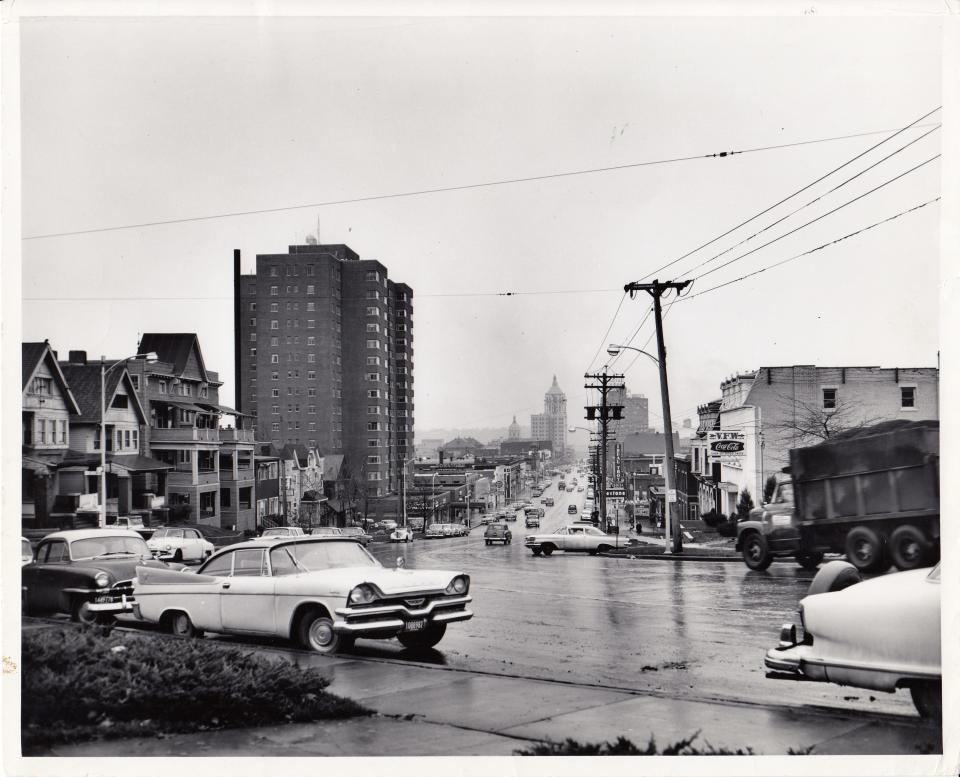
The Polk's Peoria City Directory for 1956 listed over 500 businesses and offices on Main Street alone from Crescent Avenue to the Illinois River. Among them were:
Hotels: The Harvard, the Hotel Pere Marquette, the Kickapoo.
Restaurants: The Bamboo Inn, Bishop's Cafeteria, the Central Restaurant, Mary's Restaurant, the Pantry, the Peoria Room and others.
Theaters: The Apollo, the Madison, the Palace.
Health and beauty: Numerous physicians, dentists and chiropractors are listed, as well as electrolysis shops and a scalp treatment location.
Specialty businesses: The Arthur Murray School of Dancing, a juke box enterprise, a massage parlor, Peoria Turkish Bath, Potash Co. of America, a sewer cleaner, a "tourist home" and a tree expert all had locations on Main Street.
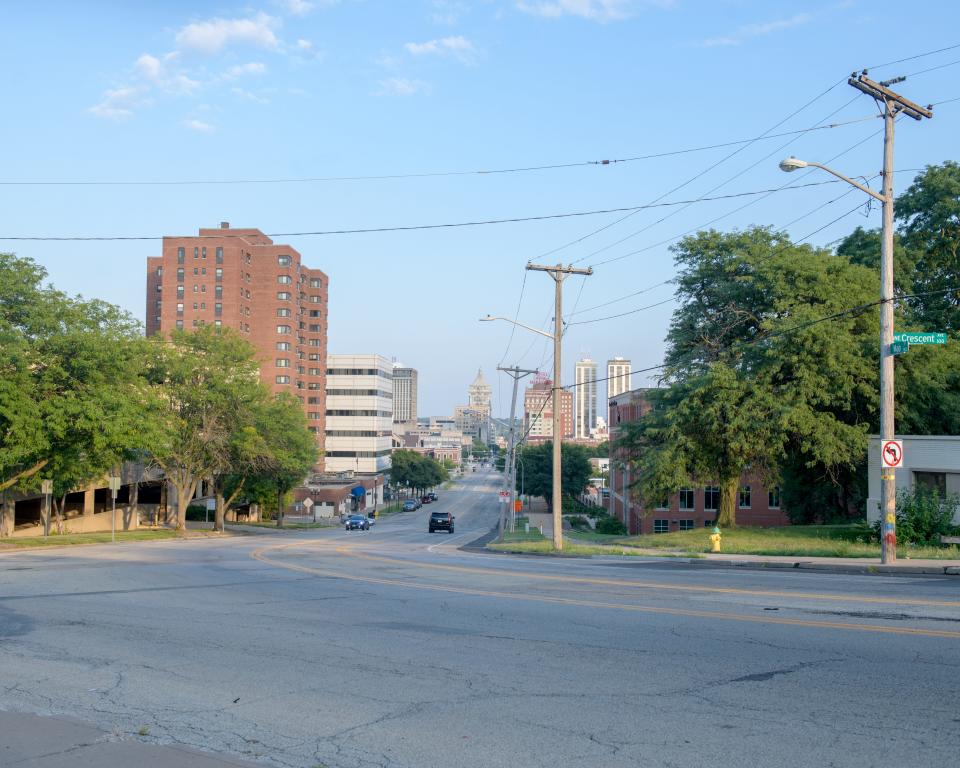
In addition, hundreds of residents lived in downtown apartments, many in the recently built Glen Oak Towers. All of that activity was confined to Main Street: again, a small sampling of what downtown Peoria offered.
A June 1967 Journal Star story mentioned "some 150 downtown businesses" that would be affected by a proposed one-way redirection of just three other streets: Harrison, Liberty and Fulton.
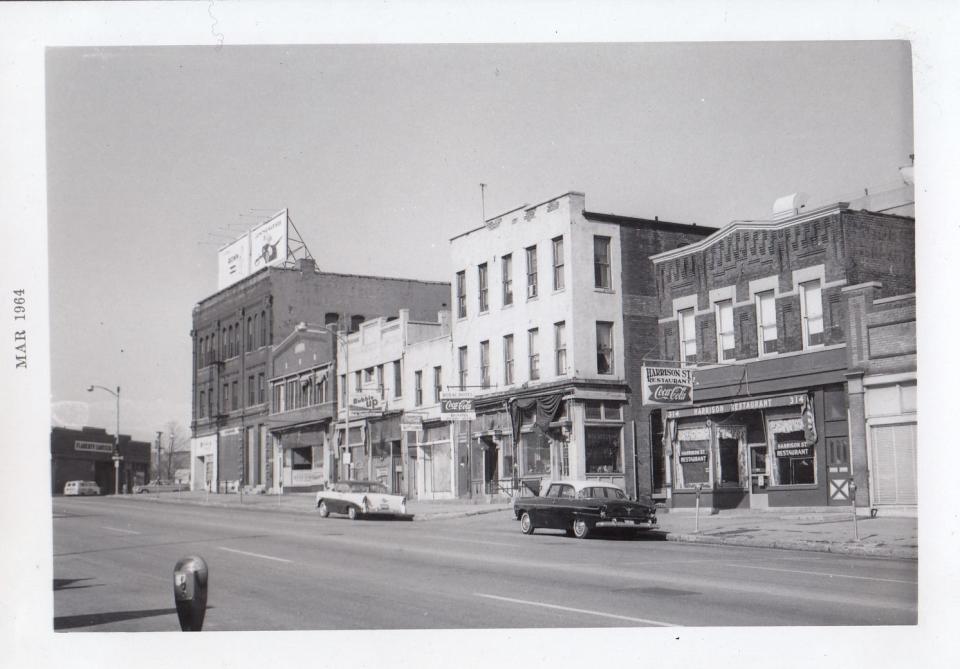
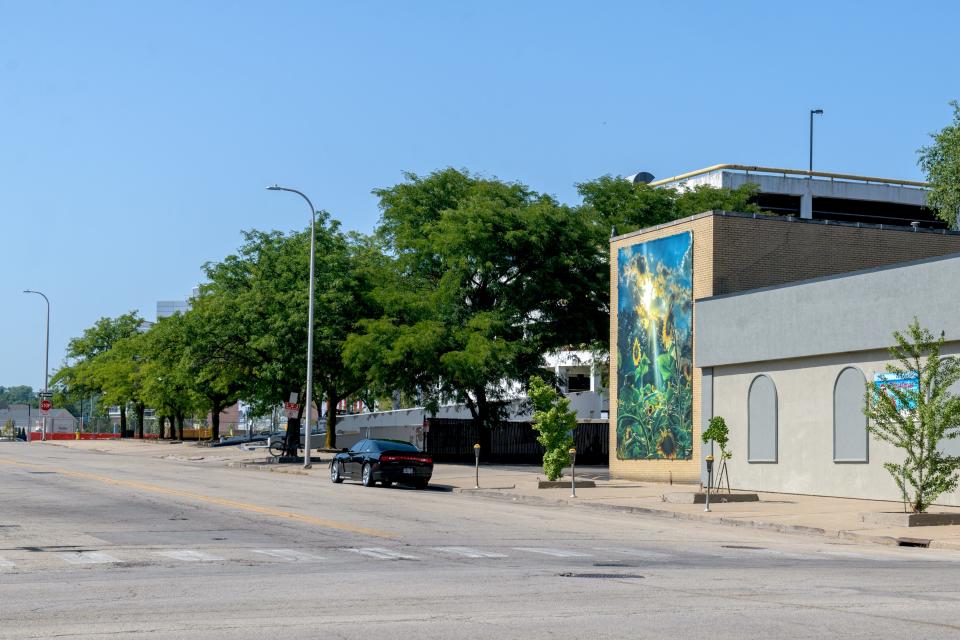
For a glimpse of the commercial force of downtown, tally the enterprises on those four streets alone. Then consider the establishments on the "presidential streets" — Washington to Monroe — and other busy avenues.
Festivals and parades
Everyday shopping and dining were not the only attractions drawing people downtown. The city center was once the site of a host of festivals and events. Among them were:
The Santa Claus parade: Reportedly dating back to the late 1800s, it is touted as the longest-running holiday parade in the country.
Downtown Days: Started in April 1955, the sales event included free bus rides for bargain hunters seeking "out of this world" values, as Journal Star stories and advertisements attested.
Fiesta Days: Three blocks of Southwest Adams Street were to be closed to vehicular traffic for the "Downtown Fiesta Vacation," which promised attendees a chance to "eat your lunch in the middle of Adams St. or ride a ferris wheel in the heart of the Central Business District," according to a July 1958 story. Also on tap during the area's "industrial vacations period" were a barbecue pit with a 500-chicken capacity, a roller coaster and a train for kids.
More: Main Street in Downtown Peoria is promising and problematic
The center of everything
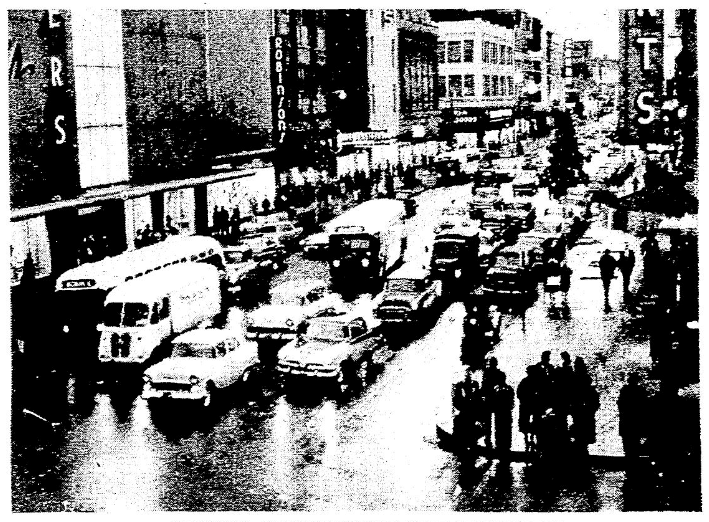
Downtown was "the center of virtually all activity," Klein added in his 1985 book, "Peoria!"
He recalled a time when hordes of people would "surge across Fulton Street between Block's and Bergner's at each change of the lights."
Klein was not alone in his nostalgia. A May 2008 Journal Star story spotlighted a Peoria Art Guild exhibit of historical photographs.
"In the 1960s, '70s and early '80s, Peoria's Downtown was the biggest shopping mall in central Illinois," the article began. It called the exhibit an opportunity to "revisit a Downtown Peoria that was still home to such familiar places as three department stores, the Jefferson Hotel, Brooks Fashion Store, Walgreen's, Logan Printing, Kellstedt's office supply store, the Peoria Creamery, J.C. Shaffer Electric, Illinois Bell Telephone Co., the Hotel Lee and a host of retail stores. The three dozen photographs going on display date mainly from the 1960s through the early 1980s."
"For longtime Peorians, they will evoke memories of a time when Downtown Peoria was a busy commercial center with its multi-story department stores, specialty shops and businesses."
From commerce to carnivals, from retail to residential, Peoria's former Central Business District inarguably was a center of activity. As Klein once wrote, "That downtown was something," indeed.
More: What is the future of Downtown Peoria? Here's the vision
This article originally appeared on Journal Star: Downtown Peoria, Illinois, was once the 'center of all activity'

